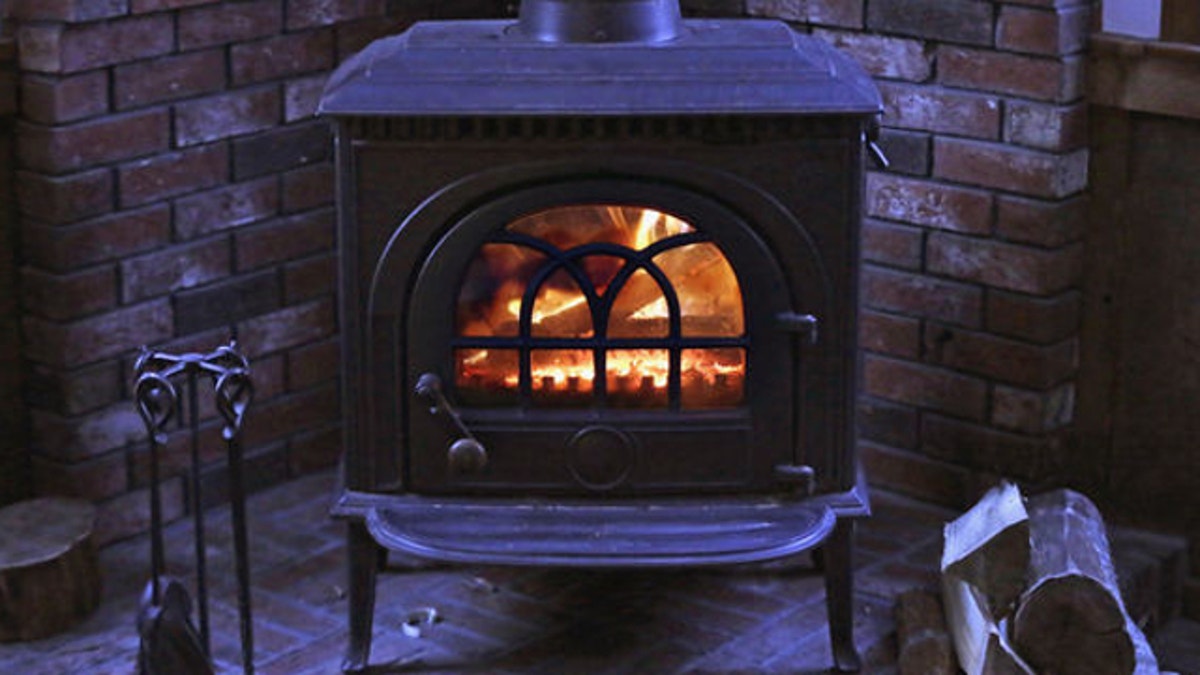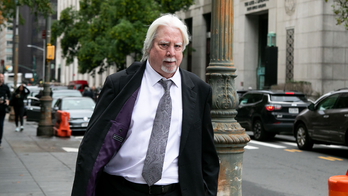
FILE: March 8, 2014: A wood stove heats a home in Freeport, Maine. (AP)
A federal proposal requiring more efficiency from wood-burning stoves has ignited a debate between the Obama administration and lawmakers who oppose the new regulations, arguing the rules impose an unfair burden on people in remote areas.
The Environmental Protection Agency proposed a rule changes in January that would dramatically tighten emissions requirements on new wood-powered heaters, though does not impact ones already in homes.
The EPA estimates that as much as 13 percent of all soot pollution in the U.S. is a result of inefficient wood-fired stoves and boilers.
The dispute pits several mostly urban states, mainly in the northeast, against some rural states such as South Dakota, which says the rules would impose an unfair burden on people in remote areas. About one in four South Dakota homes has a fireplace or wood stove.
Among those opposed to new rules are South Dakota Republicans Sen. John Thune and Rep. Kristi Noem, who say the new requirements will have a big impact on South Dakotans who rely on wood stoves during the long winter.
"Leave it to the EPA to impose more regulations on an affordable and renewable fuel source after one of the coldest winters on record and a costly propane shortage," Noem said.
Last week, Thune wrote EPA Administrator Gina McCarthy asking her to abandon the proposed changes and work with Congress to find a more balanced approach.
"South Dakota and many other states are continuing to deal with a propane shortage, which has resulted in record-high propane prices," Thune wrote. "Many families turn to secondary sources of heat, such as wood stoves, when propane and heating fuel prices increase." Residential propane prices surged this winter to $4 a gallon, nearly double the typical rate.
The regulations the EPA has on the books date back to 1988, and don't take into account some wood-burning devices that weren't in use back then. The proposed rules would give manufacturers five years to make products that reduce emissions by approximately 80 percent.
It would apply to wood heaters, including outdoor and indoor wood-fired boilers, known as hydronic heaters. The changes would only apply to new stoves and rules would not impact outdoor fireplaces, fire pits or other types of outdoor fire containers.
In Missouri, more than three dozen lawmakers co-sponsored a bill declaring that "All Missourians have a right to heat their homes and businesses using wood-burning furnaces, stoves, fireplaces and heaters." Democratic and Republican members of Congress from Maine, Montana and Missouri have also expressed concerns about the EPA's proposal.
"The EPA should not make it harder for families to heat their homes with wood stoves and ban the production of America’s current wood burning stoves," Rep. Billy Long, R-Mo., said in a statement this week.
In an op-ed published in The Wall Street Journal on Friday, Maine Gov. Paul LePage said the proposal may actually end up increasing the amount of harmful smoke in the air by making it prohibitively expensive for homeowners to buy new stoves.
"The industry has projected that in 2015, 85,000 wood stoves will be manufactured and sold. Yet if the new EPA-compliant wood stoves are too expensive, many people will just hold on to their old stoves, which only exacerbates the potential health threat from smoke," LePage wrote.
LePage also said another concern is that the EPA's proposal does not distinguish between catalytic and noncatalytic wood stoves, which produce different smoke emissions. He said the agency could eliminate noncatalytic stoves by holding both types to the same standard.
"In addition to foisting yet more rules on an already oversaturated regulatory environment, the EPA is picking winners and losers in the marketplace," he wrote.
In Minnesota, a group of lawmakers have introduced a proposal aimed at nullifying EPA regulations in part because of the wood-stove proposal. KBJR-TV reported that the bill would make the agency's regulatory authority invalid inside the state.
There are roughly 12 million homes in the U.S. with wood stoves overall. Of those, as many as 9 million are less than half as efficient as more modern stoves, according to the EPA. About 2 percent U.S. homes rely on wood as their primary heating source, a number that has risen in the last 10 years.
Mike Hindbjorgen works at The Fire Emporium, a Sioux Falls, South Dakota store that sells a variety of stoves, including wood-fired models. He said the overall trend he has seen has been away from wood stoves to models powered by natural gas. But he said his store still sees rural clients who have been affected by increased propane prices who are interested in wood models.
"When they took that shock on propane prices, a lot of them were thinking three or four grand for a new wood stove makes sense," said Hindbjorgen, 46. "The price of propane is jumping around ... they're trying to put a budget together."
Hindbjorgen said even those purchases were usually more efficient wood-fired models than traditional stoves.
Manufacturers and politicians in states with large rural populations have remained skeptical of new regulations and opposed to changes.
In October, seven states primarily located in the urban northeast — New York, Connecticut, Maryland, Massachusetts, Oregon, Rhode Island and Vermont — sued the EPA asking the agency to update their emission policy to include wood-fired boilers.
The EPA has been careful to note the new regulations won't require people to buy new devices, just put more efficient models in when they replace old stoves. The agency has said the changes are needed to lower emissions and improve air quality.
The comment period on the new regulations is drawing to a close and the EPA will then move to the next phase of its rule making process.
The Associated Press contributed to this report.




